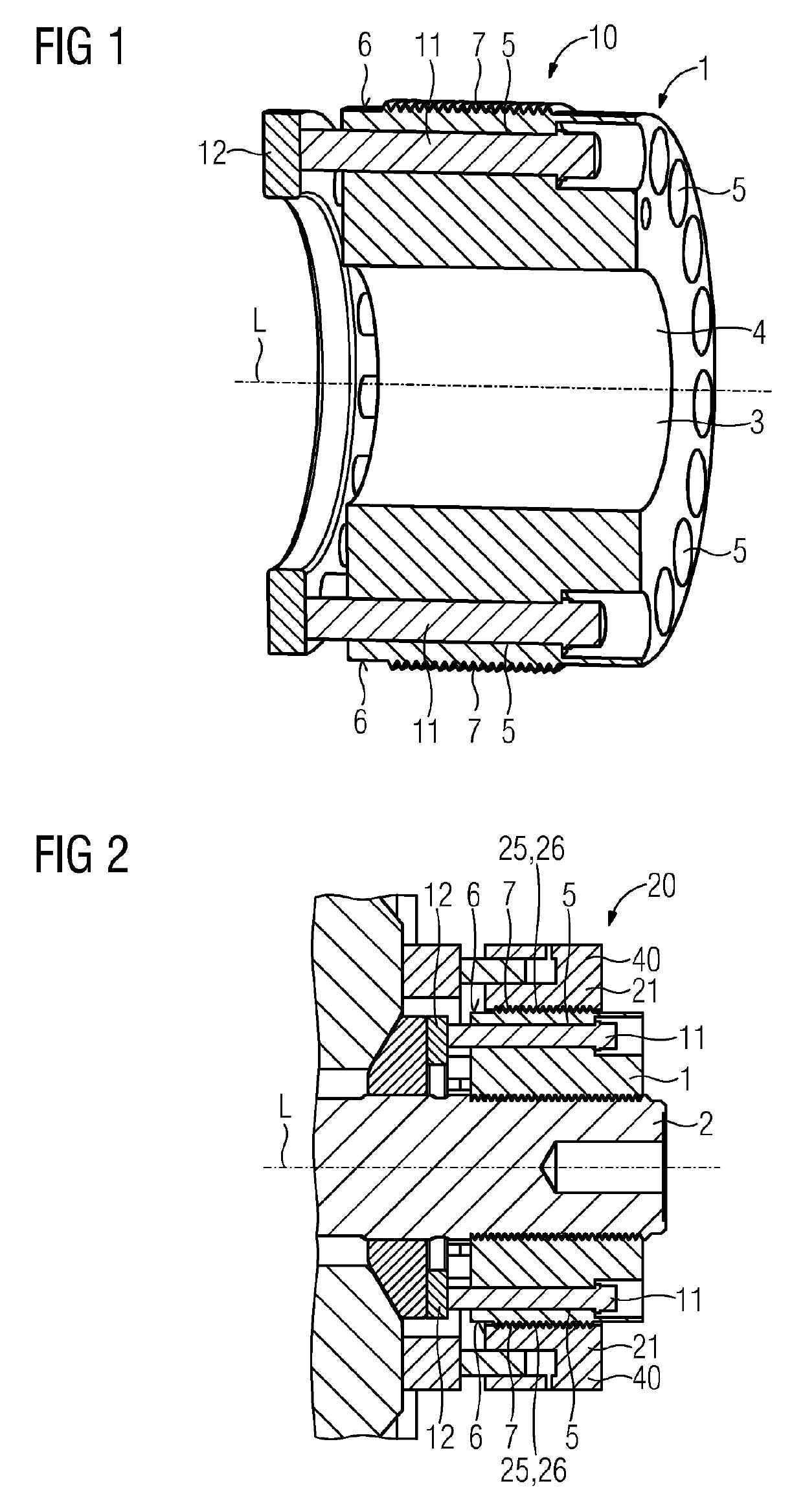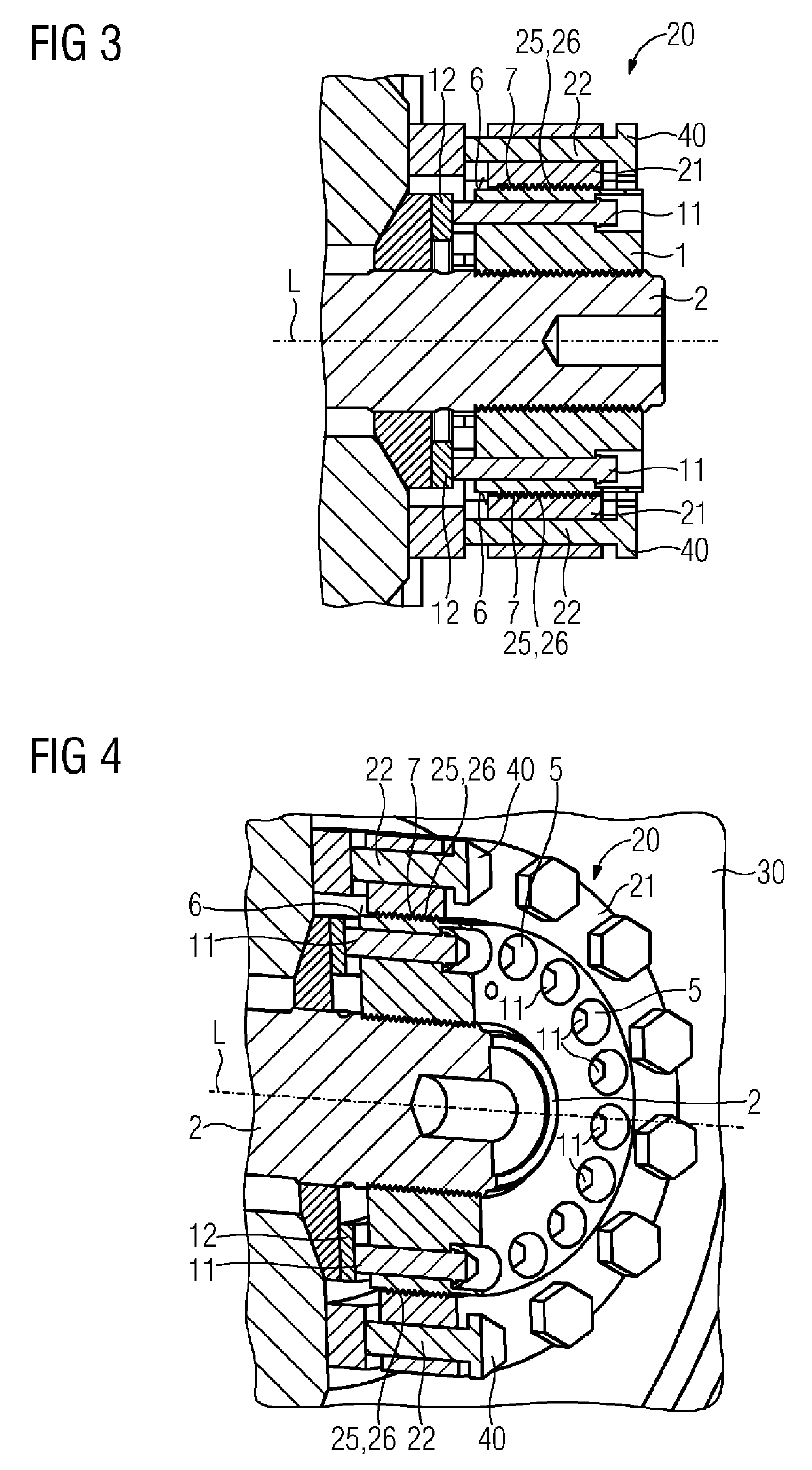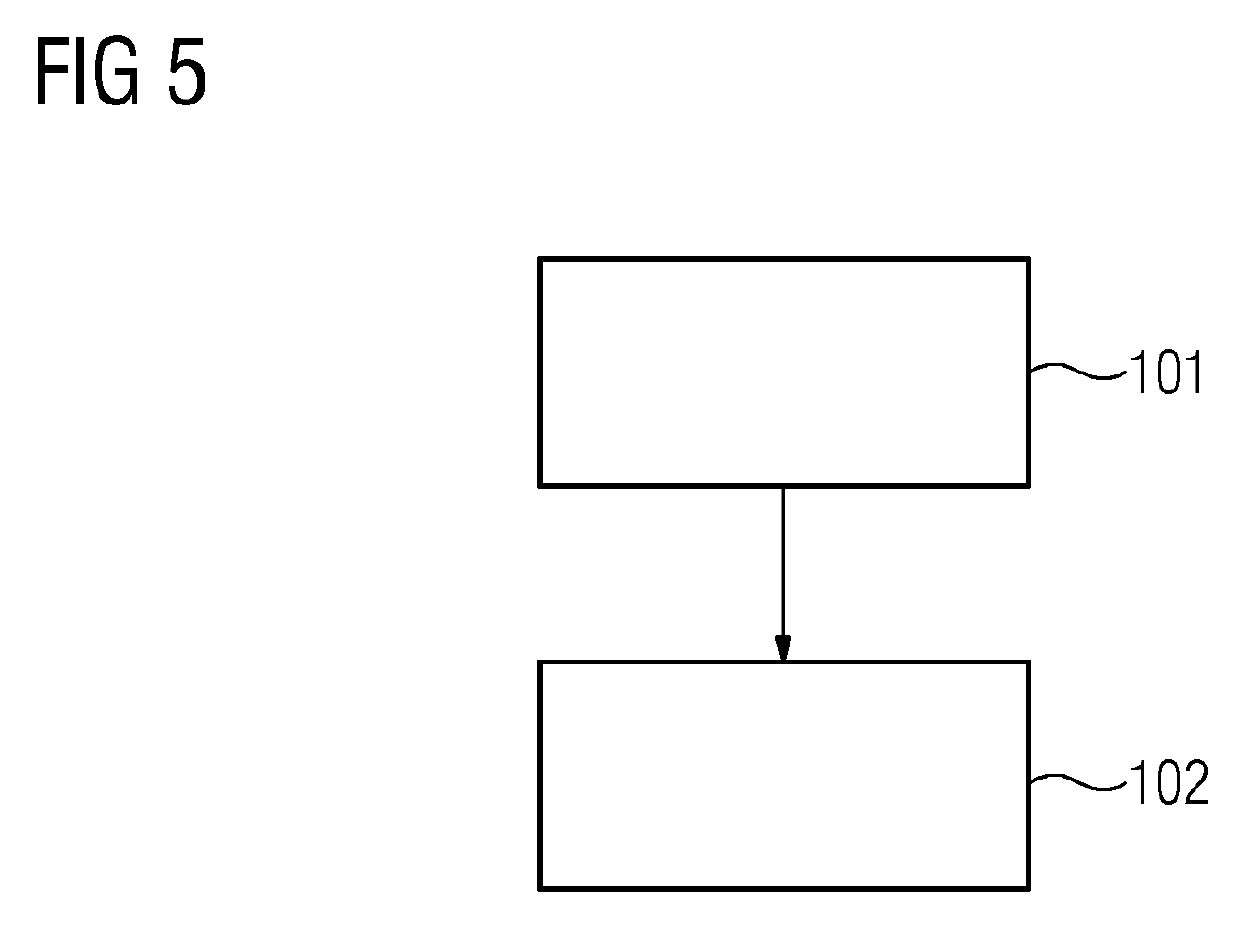Annular clamping nut for a tie bar
a technology of clamping nut and tie rod, which is applied in the direction of screw, load-modified fasteners, fastening means, etc., can solve the problems of no longer being mechanically loosened, rotor components are under a great deal of stress, and rotors in gas turbines are customarily exposed to high mechanical and thermal loads, etc., to achieve statistically reduced volume of clamping nut, high material stress, and small material tension
- Summary
- Abstract
- Description
- Claims
- Application Information
AI Technical Summary
Benefits of technology
Problems solved by technology
Method used
Image
Examples
Embodiment Construction
[0043]FIG. 1 shows a side sectional view through a first embodiment of a clamping nut system 10 according to the invention which, in addition to an embodiment of a clamping nut 1 according to the invention, exhibits a number of clamping screws 11 (first clamping screws 11) and also a clamping ring 12. In addition to a central recess 3 for receiving a tie bar 2 (not shown in this case) the clamping nut 1 has a number of passages 5 parallel to the longitudinal direction L represented which are arranged in uniform radial spacings in the ring circumference direction. The passages exhibit a directional course which is substantially parallel to the longitudinal direction L. Clamping screws 11 are guided through each of the passages 5, which clamping screws are in contact with a clamping ring 12 at the ends in such a manner that said clamping ring supports the ends of the clamping screws 11. The clamping ring 12 has a central recess not further provided with a reference number which is arr...
PUM
| Property | Measurement | Unit |
|---|---|---|
| temperatures | aaaaa | aaaaa |
| diameter | aaaaa | aaaaa |
| tension | aaaaa | aaaaa |
Abstract
Description
Claims
Application Information
 Login to View More
Login to View More - R&D
- Intellectual Property
- Life Sciences
- Materials
- Tech Scout
- Unparalleled Data Quality
- Higher Quality Content
- 60% Fewer Hallucinations
Browse by: Latest US Patents, China's latest patents, Technical Efficacy Thesaurus, Application Domain, Technology Topic, Popular Technical Reports.
© 2025 PatSnap. All rights reserved.Legal|Privacy policy|Modern Slavery Act Transparency Statement|Sitemap|About US| Contact US: help@patsnap.com



